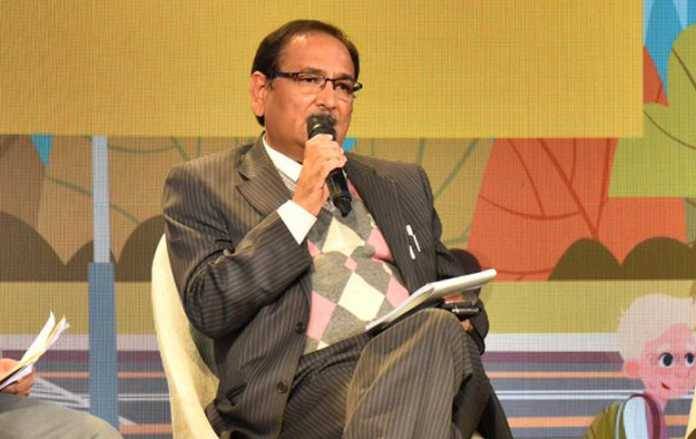Walking is an important mode of transport for short trips. Nearly everyone is a pedestrian at some point of time in most of the trips. Every trip begins and ends as a pedestrian trip. However it is a bitter truth that Indian roads have grossly inadequate pedestrian facilities making walking unpleasant, uncomfortable, unattractive and unsafe most of the times. In the year 2016, 15746 pedestrian died on Indian roads constituting 10.5% of the total fatalities in road accidents.
In Goa, they form about 14.3 % of the total deaths in road accidents. In Delhi this figure is over 40%. Pedestrians have always been the most neglected and vulnerable among the various kinds of road users. It is the motorists who claim the most part of the road in terms of carriage way. Footpath, as an integral part of road construction, has traditionally taken back seat inspite of the fact that walking is the most ancient, cheapest, cleanest and healthiest form of transport and the modal share of walking in India is about 28%. Lack of pedestrian facilities lead to low walkability. There are two important ways a pedestrian uses roads. First by walking along the road on the footpath, if it exists, and second by crossing the road. Adequate pedestrian facilities are must to enable pedestrians use the roads safely.
Spoke on Road Safety & my experiences as Head of Delhi Traffic Police. Bikers care more about the screens of their smart phones than their heads, showing no faith in helmets. Full compliance to safety norms is possible only when one believes in them & not by enforcement alone. pic.twitter.com/LDvNmSqPDm
— Muktesh Chander IPS (@mukteshchander) January 24, 2018
If a carriage way on the road gets blocked for any reasons, the resulting traffic jam causes a hue and cry and all relevant agencies, including traffic police, immediately intervene to resolve the issue. But if a similar obstruction is caused to footpath or other pedestrian facilities there is hardly any similar hue and cry noticed. In such a situation, a pedestrian is forced to walk on road or cross the road in a hazardous manner risking life. The rights of a pedestrian, to walk on footpath and to cross road from designated place or on a zebra crossing are hardly respected in India. At some busy road stretches, it is pathetic to see pedestrian struggling to cross the roads. It is also a hard fact that several times needs of pedestrian are not kept in mind while designing roads. This is inspite of the fact that Indian Road Congress has given detailed guidelines for pedestrian facilities in their publication IRC: 103-2012. Rules of the Road Regulation (1989) also contain provisions related to rights of pedestrian (Rule 8, 11 & 15). National Urban Transport Policy of 2006 has also recognised the plight of pedestrian. Multiple agencies are responsible for ensuring these rights but often there is hardly any cohesion between them. The practice of conducting audits of pedestrian facilities is almost non-existent in the functioning of road owning
agencies.
Following most important pedestrian facilities are either non-existent, inadequate or unusable on most of the Indian roads.
- User friendly, continuous, safe, accessible (even to children, disabled and elderly persons), convenient footpath, having a width of at least 1.5 m., free from encroachment, parking, unevenness, bushes, garbage, hawkers, obstruction, open manholes/pits etc.
- Properly painted pedestrian crossways (Zebra crossing) and stop line free from obstacles.
- Usable and well illuminated subways or overhead pedestrian bridges and skywalks.
- Provision of countdown pedestrian aspects on signalised junction.
- Provision of auditory on-demand pelican signals for pedestrians.
- Pedestrian refuge at the median of the road.
- Adequate road signs related to pedestrian safety.
- Adequate lightning on footpath and zebra crossing.
- Traffic calming measures at unsignalised junctions.
- Pedestrian furnitures such as benches, garbage bins, water dispensers, street maps etc.
- Carbs with height of 6” with provision of cut/ramp at designated places.
Pedestrian are unorganized and very few NGO’s are fighting for their rights in India. Policy planners hardly walk on roads and as a result are almost callous and oblivious of the plight of pedestrian. In traffic management, traditionally emphasis has always been on increasing speed and mobility of motorized vehicles and reduce traffic congestion, almost totally forgetting the pedestrians. Removing free left turns to facilitate free traffic flow is one such measures which is dangerous to pedestrians.
It is high time we recognise pedestrian as a legitimate road user and provide him comfortable, convenient, pleasant, efficient and safe pedestrian facilities to enable more and more people to use walking as a means of transport with the enactment of Motor Vehicle Act (Amendment) Bill 2017 which has already been passed by Lok Sabha, it is expected that, road safety in India will get a boost and pedestrians will also get equitable share of road and facilities.















